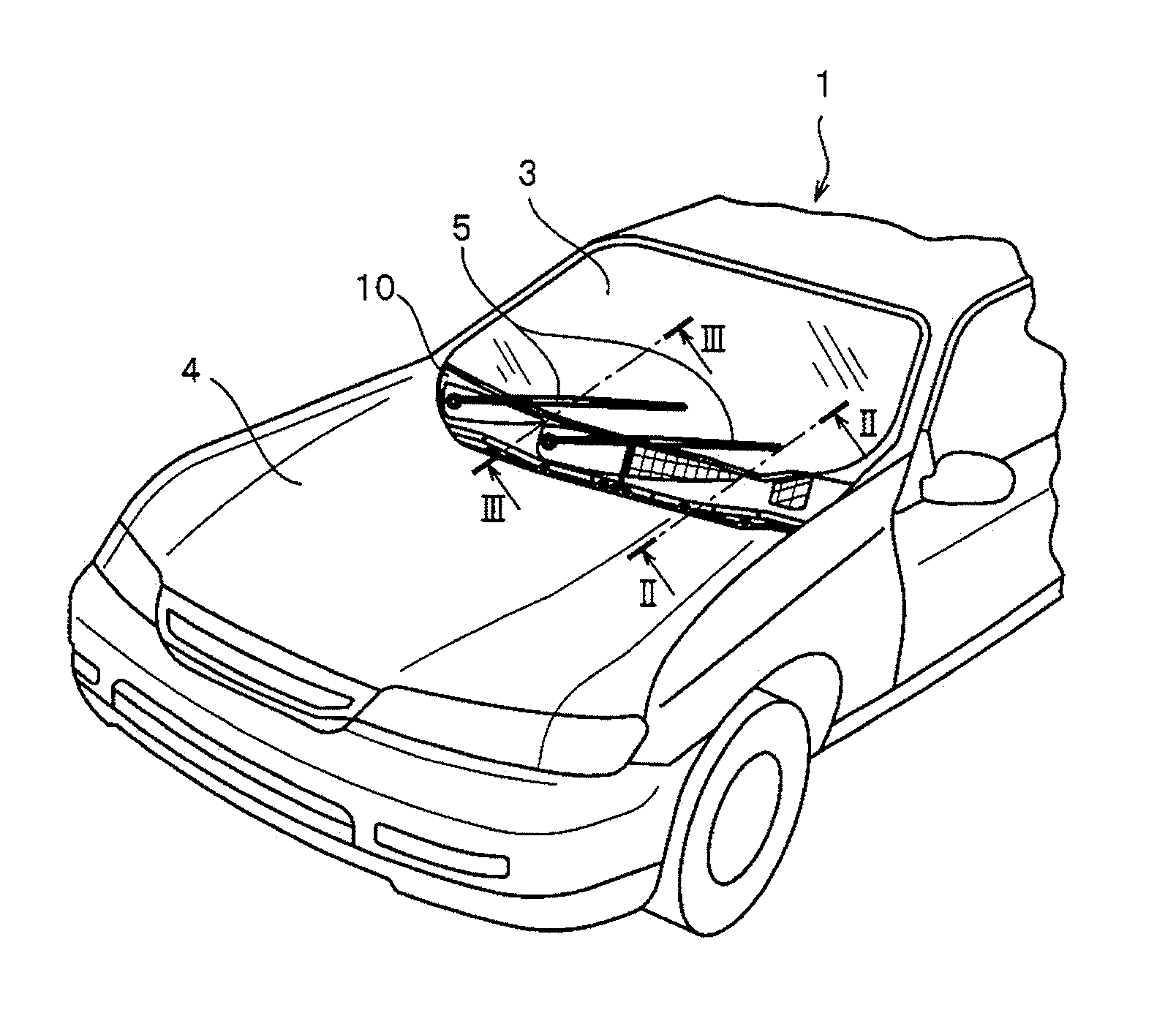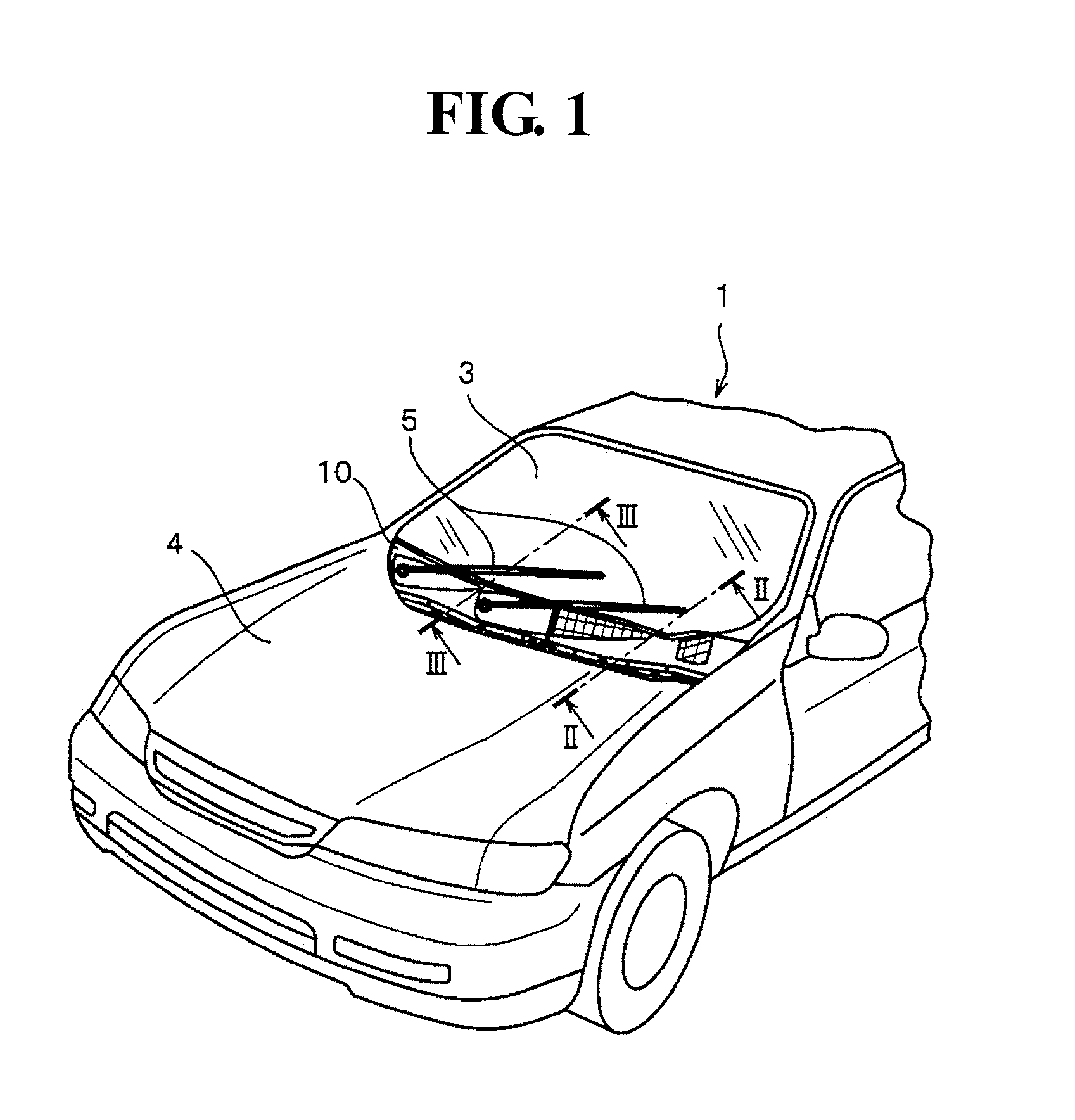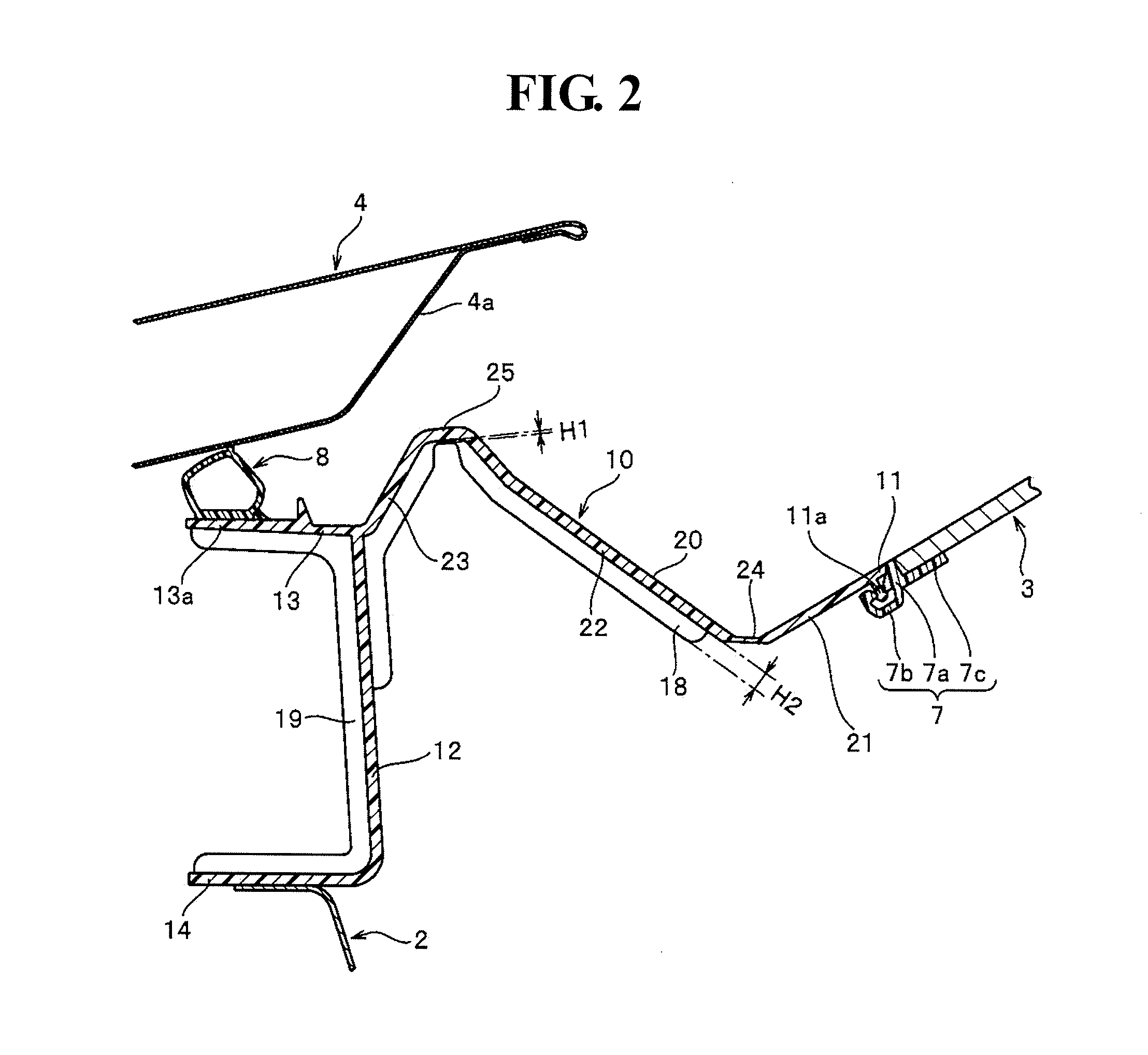Cowl top cover
- Summary
- Abstract
- Description
- Claims
- Application Information
AI Technical Summary
Benefits of technology
Problems solved by technology
Method used
Image
Examples
first embodiment
[0049]FIG. 1 is a perspective view showing a vehicle body front part of an automotive; FIG. 2 and FIG. 3 are cross-sectional views showing cross sections taken along a II-II line and a III-III line in FIG. 1, regarding a cowl top cover according to the present first embodiment.
[0050]It should be noted that in the description below, the term “front-rear direction” is a vehicle lengthwise direction, where “forward” is a direction in which an automotive moves forward and “backward” is a direction in which the automotive moves backward. The term “left-right direction” is a vehicle widthwise direction, where directions at a left side and a right side obtained when a driver faces forward are “leftward” and “rightward”, respectively. The term “up-down direction” is a vehicle height direction, where a direction of a ground surface side relative to an automotive is “downward” and the opposite direction thereof is “upward”.
[0051]In an automotive 1 shown in FIG. 1, a windshield 3 is disposed a...
second embodiment
[0082]FIG. 4 is a cross-sectional view showing a cross section of a cowl top cover according to a second embodiment.
[0083]It should be noted that in the present second embodiment, a component and a member having the substantially same configuration as the member or the component described in the above-described first embodiment will be imparted with the same symbols to thereby omit the description.
[0084]A cowl top cover 30 according to the present second embodiment is formed by injection molding a thermoplastics resin such as polypropylene, in much the same way as in the cowl top cover 10 according to the above-described first embodiment. Further, the cowl top cover 30 includes: a cover body part 40; a cover rear end 31 that is disposed at a rear end side of the cover body part 40 and that is connected via the fitting member 7 to the windshield 3; a forward vertical wall part 32 disposed, along an up-down direction, in the front end of the cover body part 40; an upward extended part...
PUM
 Login to View More
Login to View More Abstract
Description
Claims
Application Information
 Login to View More
Login to View More - R&D
- Intellectual Property
- Life Sciences
- Materials
- Tech Scout
- Unparalleled Data Quality
- Higher Quality Content
- 60% Fewer Hallucinations
Browse by: Latest US Patents, China's latest patents, Technical Efficacy Thesaurus, Application Domain, Technology Topic, Popular Technical Reports.
© 2025 PatSnap. All rights reserved.Legal|Privacy policy|Modern Slavery Act Transparency Statement|Sitemap|About US| Contact US: help@patsnap.com



